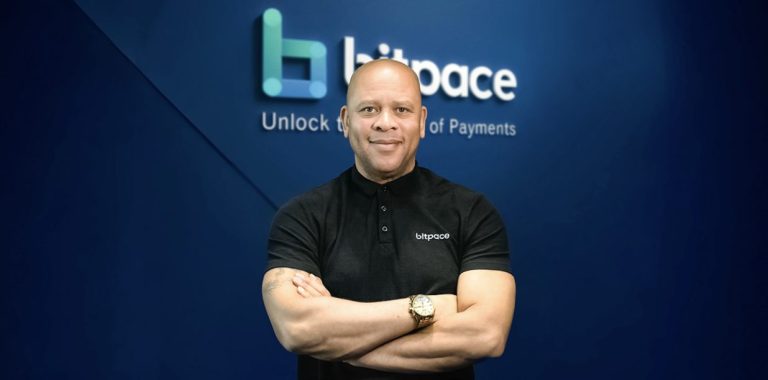When accidents happen, they often leave more than just physical scars. The aftermath can include financial strain, emotional distress, and significant lifestyle changes. If you’ve suffered an injury due to someone else’s negligence, you may be entitled to seek compensation through personal injury compensation claims. This comprehensive guide explores the various types of injuries that qualify for compensation and provides insight into the claims process.
Understanding Your Rights Is Key
The legal system recognises that victims shouldn’t bear the financial burden of injuries caused by others. Whether you’ve been hurt in a workplace incident, road traffic collision, or public space accident, understanding your rights is the first step toward receiving fair compensation.
Common Types of Personal Injury Claims
Personal injury compensation claims encompass a wide range of accidents and incidents. The most frequently encountered categories include workplace accidents, road traffic collisions, and incidents in public spaces. According to recent statistics, hundreds of thousands of personal injury compensation claims are filed annually, highlighting the prevalence of these unfortunate events.
Workplace Injury Claims
Workplace accidents remain a significant concern despite stringent health and safety regulations. Employers have a legal duty of care toward their staff, meaning they must provide a safe working environment, appropriate training, and necessary protective equipment. When these obligations aren’t met, resulting injuries may form the basis of a compensation claim.
Road Traffic Claims
Road traffic accidents constitute another major category, affecting drivers, passengers, cyclists, pedestrians, and motorcyclists alike. These incidents can range from minor collisions causing whiplash to catastrophic crashes resulting in life-altering injuries. The compensation available typically covers medical expenses, loss of earnings, and the impact on your quality of life.
Claims Based On Public Liability
Accidents in public places, often referred to as public liability cases, occur when property owners or occupiers fail to maintain safe conditions. These might include slips on wet floors, trips over obstacles, or falls due to poor maintenance. Such incidents frequently happen in supermarkets, shopping centres, parks, and other communal areas.
Physical Injuries Eligible for Compensation
Head and Brain Injuries
Head and brain injuries represent some of the most serious personal injury compensation claims. These range from minor concussions to traumatic brain injuries (TBIs) with lifelong consequences. The severity determines the compensation amount, with payments potentially reaching substantial sums for catastrophic cases.
Symptoms of brain injuries aren’t always immediately apparent, sometimes developing days or weeks after an accident. This delayed onset makes medical assessment crucial, even if you initially feel fine. Documentation from healthcare professionals strengthens your claim and ensures you receive appropriate treatment.
Rehabilitation for brain injuries often requires specialised care, including physiotherapy, occupational therapy, and neuropsychological support. The costs associated with these treatments can be included in your compensation claim, along with any necessary home adaptations or long-term care requirements.
The psychological impact of brain injuries extends beyond physical symptoms, potentially affecting personality, cognitive abilities, and emotional regulation. Comprehensive personal injury compensation claims account for these non-physical effects, recognising the profound changes victims and their families experience.
Spinal and Back Injuries
Spinal injuries range from relatively minor strains to severe damage causing partial or complete paralysis. The spinal cord’s complex nature means injuries can affect multiple body systems, potentially leading to mobility issues, chronic pain, and reduced independence.
Back injuries, while sometimes less severe than spinal cord damage, can still significantly impact daily life. Herniated discs, vertebral fractures, and soft tissue injuries may cause debilitating pain and restrict movement. Recovery often requires extended physiotherapy and medication, with some victims experiencing permanent limitations.
Compensation for spinal and back injuries typically considers immediate medical costs, ongoing treatment needs, and potential lifestyle modifications. This might include home and vehicle adaptations, mobility aids, and professional care assistance if independence is compromised.
The emotional toll of adjusting to life with a spinal injury can be substantial. Personal injury compensation claims may incorporate psychological support costs and compensation for diminished quality of life, acknowledging the comprehensive impact of these injuries.
Limb Injuries and Amputations
Injuries to arms and legs vary widely in severity, from simple fractures to traumatic amputations. Even seemingly straightforward breaks can lead to complications like non-union (failure to heal properly) or post-traumatic arthritis, potentially causing long-term disability.
Amputation cases, whether resulting directly from trauma or necessitated by medical intervention following an accident, represent particularly serious personal injury compensation claims. The life-changing nature of losing a limb warrants substantial compensation to address both immediate and future needs.
Prosthetic technology continues to advance, offering increasingly sophisticated options for amputees. However, these devices are expensive and require regular replacement and maintenance. Comprehensive compensation claims should account for initial prosthetics, ongoing replacements, and necessary adjustments throughout the victim’s lifetime.
Beyond physical adaptations, amputees often require psychological support to process their changed circumstances and develop coping strategies. Personal injury compensation claims typically include provisions for mental health services, recognising the emotional journey accompanying physical recovery.
Soft Tissue Injuries
Soft tissue injuries affect muscles, ligaments, and tendons, with whiplash being perhaps the most widely recognised example. These injuries commonly result from sudden movements, such as those experienced during vehicle collisions or falls.
While sometimes dismissed as minor, soft tissue injuries can cause significant pain and functional limitations. Recovery periods vary considerably, with some victims experiencing symptoms for months or even years. Chronic cases may develop into more serious conditions like fibromyalgia or complex regional pain syndrome.
Diagnosis of soft tissue injuries often relies on clinical assessment rather than imaging, as damage may not be visible on X-rays or scans. This can complicate personal injury compensation claims, making thorough medical documentation and expert testimony particularly important.
Treatment typically involves a combination of rest, physical therapy, pain management, and gradual return to activity. Compensation claims should reflect not only immediate treatment costs but also any extended rehabilitation needs and impact on work capacity during recovery.
Psychological Injuries and Compensation
The psychological impact of accidents is increasingly recognised within personal injury compensation claims. Conditions like post-traumatic stress disorder (PTSD), anxiety, and depression can develop following traumatic events, sometimes affecting victims as severely as physical injuries.
PTSD symptoms include flashbacks, nightmares, hypervigilance, and avoidance behaviours related to the traumatic event. These symptoms can significantly disrupt daily functioning, relationships, and work performance. Diagnosis by mental health professionals is essential for establishing these conditions within compensation claims.
Psychological injuries may occur alongside physical harm or develop independently. For example, witnesses to serious accidents or those involved in near-miss incidents might experience psychological trauma without physical injury. These “pure psychological” claims are valid, though they sometimes face additional scrutiny.
Treatment for psychological conditions typically involves therapy approaches like cognitive-behavioural therapy (CBT), medication, and support groups. Personal injury compensation claims should include provisions for appropriate mental health care, acknowledging that psychological recovery can be as important and time-consuming as physical healing.
Special Circumstances in Injury Claims
Fatal Injury Claims
When accidents result in fatalities, dependents or family members may pursue compensation claims. These cases involve unique considerations, including funeral expenses, loss of financial support, and the emotional impact of bereavement.
The claims process for fatal injuries differs slightly from that of standard personal injury compensation claims. Depending on the jurisdiction, claims may be brought under specific legislation, such as the Fatal Accidents Act, which has particular rules regarding eligible claimants and compensation components.
Compensation in fatal cases typically includes a bereavement award (a statutory sum acknowledging the loss) plus individualised calculations for financial dependencies. This might include the deceased’s earnings, pension entitlements, and non-financial contributions, such as childcare or household maintenance.
Appointing A Caring Supportive Lawyer Is Vital
The emotional dimension of fatal injury claims requires sensitive handling by legal professionals. While no compensation can truly address the loss of a loved one, financial security can provide practical support during an incredibly difficult time.
Catastrophic Injuries
Catastrophic injuries fundamentally alter victims’ lives, potentially requiring lifelong care and support. These include severe brain or spinal injuries, multiple amputations, or combinations of serious injuries affecting multiple body systems.
Personal injury compensation claims for catastrophic injuries are necessarily complex, requiring detailed assessment of immediate needs and future requirements. Expert input from medical professionals, care specialists, occupational therapists, and financial advisors helps establish comprehensive compensation packages.
Accommodation needs often change following catastrophic injuries, potentially requiring home modifications or entirely new housing with accessibility features. Transportation, specialised equipment, and professional care represent ongoing expenses that must be factored into compensation calculations.
The long-term nature of catastrophic injuries means compensation must account for future developments, including medical advancements, changing care needs as victims age, and potential complications. Structured settlements or periodical payment orders may provide more appropriate long-term support than single lump sums.
The Compensation Process Explained
Establishing Liability
Successful personal injury compensation claims require establishing that another party was legally responsible for your injuries. This typically involves demonstrating they owed you a duty of care, breached that duty through action or inaction, and directly caused your injuries as a result.
The Evidence Collection Process Is A Key Part Of Any Successful Claim
Evidence collection forms a crucial part of establishing liability. This might include accident scene photographs, witness statements, expert opinions, medical records, and official reports from authorities like police or workplace safety inspectors.
In some cases, liability may be shared between multiple parties or partially attributed to the injured person (contributory negligence). The latter doesn’t necessarily prevent compensation but may reduce the amount awarded proportionally to the claimant’s responsibility for the incident.
There Is A Time Limit To Making a Claim
Time limits apply to personal injury compensation claims, typically three years from the date of injury or from when you became aware of the injury. Exceptions exist for children and those with limited mental capacity, but prompt legal advice remains advisable in all cases.
Calculating Compensation Amounts
Personal injury compensation typically comprises two main elements: general damages for pain, suffering, and loss of amenity, and special damages for specific financial losses and expenses.
General damages are calculated with reference to judicial guidelines and previous similar cases. The severity and duration of injuries, along with their impact on quality of life, determine where within the guideline ranges a particular case falls.
Special damages cover quantifiable financial losses, including medical expenses, travel costs, care assistance, property damage, and lost earnings. These calculations consider both past losses already incurred and anticipated future expenses or income reduction.
Professional legal advice proves invaluable in ensuring all potential compensation elements are identified and appropriately valued. Personal injury specialists understand the nuances of different injury types and can secure expert evidence to support comprehensive claims.
Seeking Professional Legal Support
Navigating personal injury compensation claims without expert guidance can be challenging. Specialist solicitors understand the legal frameworks, evidence requirements, and negotiation strategies necessary for successful outcomes.
No Win No Fee
Many personal injury claims proceed on a “no win, no fee” basis, formally known as Conditional Fee Agreements. This arrangement means legal fees are only payable if your claim succeeds, typically as a percentage of the compensation awarded.
When selecting legal representation, consider firms with specific experience in your injury type. Specialist knowledge of medical terminology, treatment pathways, and typical prognoses for your condition can significantly strengthen your case.
Ward and Rider Offer A Free Initial Consultation
Initial consultations with personal injury solicitors are often free and without obligation. These meetings allow you to discuss your circumstances, understand your options, and make informed decisions about proceeding with a claim.
Conclusion
Personal injury compensation claims serve an important purpose in our legal system, providing financial support when injuries disrupt lives and livelihoods. Understanding the types of injuries eligible for compensation and the claims process empowers victims to pursue appropriate redress.
While compensation cannot undo the harm suffered, it can provide practical assistance with recovery, rehabilitation, and adaptation to changed circumstances. With professional legal support, those affected by injuries caused by others’ negligence can focus on their recovery while experts handle the complexities of securing fair compensation.
If you’ve suffered an injury that wasn’t your fault, consider seeking specialist legal advice to explore your options. Time limits apply to personal injury compensation claims, so prompt action helps protect your right to potential compensation.












 Bitcoin
Bitcoin  Ethereum
Ethereum  Tether
Tether  XRP
XRP  USDC
USDC  Lido Staked Ether
Lido Staked Ether  TRON
TRON  Cardano
Cardano  Avalanche
Avalanche  Toncoin
Toncoin  Solana
Solana